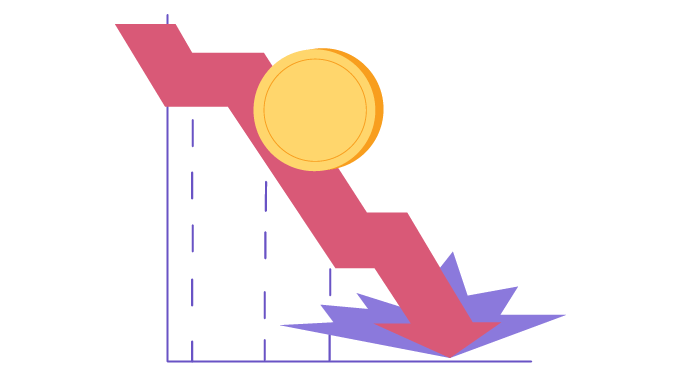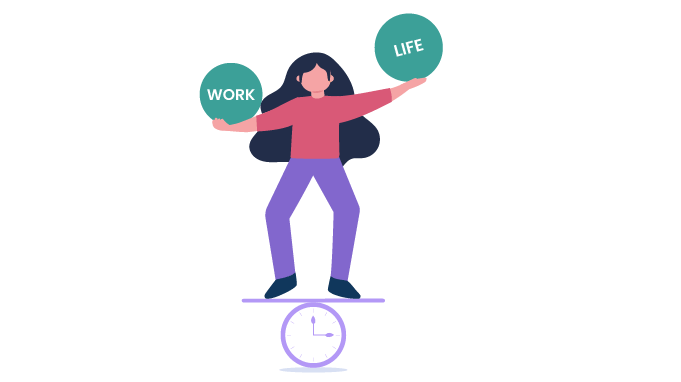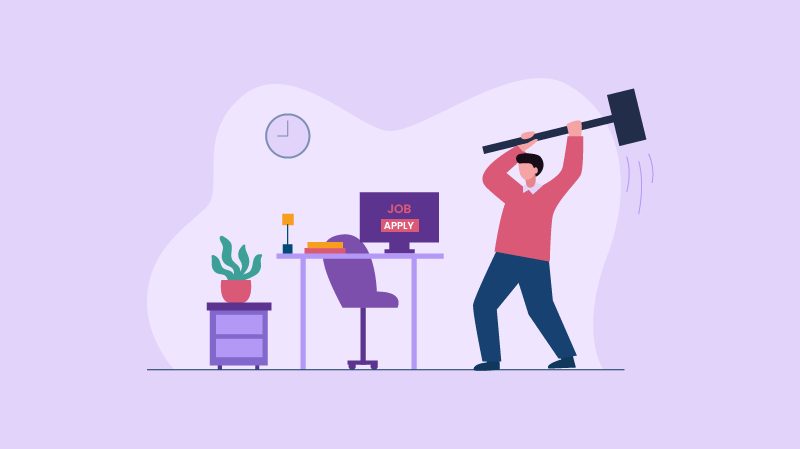Rage Applying: Everything You Need to Know About It
The corporate sector has encountered many burning trends in the past two to three years, like hybrid work culture, quiet quitting, and great resignation. These trends have altered the working dynamics of organizations and forced businesses to adapt to newer developments.
Another trend that has joined the corporate bandwagon is rage applying.
And what are the reasons that have been influencing this trend? This article will delve into the topic and how it can and will impact an organization in the present scenario.
Let’s begin!
What is Rage Applying?
Rage applying is an aggressive form of applying to different jobs without giving much thought in a short amount of time. This happens when an employee feels unappreciated and underpaid by their employers.
But what made this trend so popular?
The term “rage applying” became famous after a TikTok video went viral where the user got mad at work and started applying for different jobs. Eventually, the user landed a job with a higher pay scale with a good working environment.
This significantly impacted the current workplace, with employees trying it out without considering the consequences.
And this trend is particularly high among Gen-Z. A few of the reasons behind this include the following-
-
This group of employees is open to job changes and is always looking for opportunities to advance their careers.
-
Apart from the money, Gen-Z employees are more into employee benefits and what the company has to offer.
-
Gen-Z employees are critical regarding mental health; if a workplace does not provide a good working environment, they are certain to leave that job.
-
When Gen-Zs are passed over for a promotion, it forces them to look for a job that recognizes their abilities and skills.
What are the Factors Influencing Rage Applying?
1. Low Pay

If you are not paying attention to the pay scale of your employees, then it is high time you do that. According to a Flexjobs survey, 59% of the 2,202 employees polled say a low salary is a primary reason they quit their job. That number can be scary if you want to improve your retention rate.
Underpaying your employees compels them to search for newer jobs that value their skills and reduce financial stress. This has led the employees to haphazardly apply for jobs without thinking about it.
2. Growing Frustration

When employees are not provided the necessary flexibility to carry out their work, it limits their working capacity. In addition, when managers take credit for their work, the employees feel dejected. In the long run, this increases the frustration and negative emotion of the employees.
This is another reason why employees are resorting to rage applying and joining the bandwagon.
3. Lack of Appreciation

One of the top reasons for the increase in rage applying is the lack of appreciation in the workplace. When employees are not acknowledged for their efforts and good work, it makes them feel undervalued. 44% of employees leave their jobs because they do not receive adequate recognition for their efforts. And this is something that every organization needs to consider and work on developing appropriate appreciation systems.
4. Lack of Growth

Improving the learning curve is a crucial part of an employee lifecycle. And without any growth opportunities, it becomes difficult for the employees to upskill. This makes their work stagnant, and they must continue doing monotonous work.
To explore new challenges, employees are applying to new jobs to re-learn and upskill. This has increased the trend of rage-applying without even having proper future plans.
5. Poor Work-life Balance

A job that provides a better work-life balance and greater personal well-being is extremely important, according to 53% of employees.
However, if an organization does the exact opposite, employees are more likely to leave the organization. And chances are high that they might start rage-applying, which is not a good sign for the company and the employees. This will increase the employee turnover rate, which will have a long-term negative impact on the company.
Signs that Your Employees Might be Thinking of Rage Applying
When an employee is rage-applying, they have already decided to leave the company. Or are on the verge of quitting the organization. You cannot predict if your employees are rage applying, but you can definitely look for signs that can be bothersome to the workplace.
Signs may vary, and it is also not proven if these signs can be related to rage-applying. But you can figure them out and address the issues faced by the employees.
1. Having a Casual Attitude

One of the prominent signs employees show when they are unhappy is having a casual attitude at work.
They are not serious about their job and become quite disruptive. The employees are never on time and leave early, which can negatively affect the other employees. In addition, such employees have less professionalism and become less productive over time.
Read more: How To Handle Negative Attitude In The Workplace
2. Getting Irritated at Trivial Matters

Employees who might rage-apply are more likely to become irritated by minor workplace issues.
These employees are less likely to be empathetic and have little understanding of how others feel. This can increase the chances of a conflict in the workplace which demoralizes the workplace. In the long run, it impacts the productivity and engagement of employees.
3. Not Fulfilling Responsibilities

When employees feel their current job role has nothing to offer them and improve their learning curve, they drift apart. And when they get detached from their work, they do not go the extra mile. Hence, reducing their work performance and diminishing their confidence.
The enthusiasm to fulfill their responsibilities minimizes over time, and the employees do not take their job seriously. Moreover, they become impulsive decision-makers without thinking of the end result. This can harm the free-flowing working system of a team and impact the overall performance.
4. Increased Absenteeism

As mentioned in the point before, when employees get detached from their work, it diminishes their desire to work. Moreover, they find the workplace an uncomfortable place to fit in. They begin to skip office hours, and there are signs of withdrawal most of the time.
This increases the absenteeism rate of the organization and negatively affects the workforce's morale. In addition, it also has a negative impact on the mental health of the employee. And to escape that situation, they start rage-applying in search of better working conditions.
Read more: The HR Professionals Guide to Employee Absenteeism
5. Less effort in Team Projects!

With decreased productivity and detachment from work, rage-applying employees are hard to collaborate with.
They will not contribute to any team projects or help the team members. Moreover, they won’t have the zeal to give their input and ideas to complete the projects. In the long run, this damages the dynamics of the entire team and increases pressure on the team members.
Make sure that you have a one-on-one session with such employees and figure out the issue rather than casually overseeing the situation.
What Can Organizations Do to Tackle Rage-Applying?
With rage applying on a rapid rise, it has become crucial for organizations to delve deeper into the matter. Once you clearly understand what it is and how it started, you will have a clearer picture of resolving the issue.
The steps below should help you set a strategy to tackle this corporate craze-
-
Re-evaluate the work culture and understand the pain points that employees are facing with the help of surveys. Ensure that the surveys are specific and the questions are to the point. This will give you more data-driven insights, and your survey will not deviate from the main issue.
-
Make changes to the talent management system that will give you a clear picture of how employees develop in their roles. With the help of these systems, you can guide them and create modules that will improve their skills and increase their learning opportunities.
-
Focus more on rewarding and recognizing your employees to improve the employee's experience. In addition, incentivize your rewards with redeemable points to make them more tangible. This will make the employees feel more valued and worthy in the company.
-
Facilitate room for mentorship and coaching programs where employees can learn people skills to improve their personality. This will give them the confidence to move forward in their careers and become a leader in the future.
Summing it Up!
The phenomenon of rage in the workplace can have serious consequences.
Increased time and effort spent reviewing and evaluating low-quality applications, damage to employer branding and reputation, and negative effects on employee retention and turnover are all negative effects of rage applying.
Furthermore, companies may lose qualified candidates who become dissatisfied with the hiring process and seek employment elsewhere.
To address the issue of rage applying, employers must focus on improving the candidate experience and reducing the frustrations that lead to rash decisions.
Companies that develop clear and transparent hiring processes, communicate effectively with candidates throughout the hiring process, and provide job seekers with support and resources can reduce the likelihood of rage applying and improve applicant quality.
FAQ-
1. What is rage applying, and which employees are more likely to follow the trend?
A. Rage applying is when employees send their resumes to many open positions offering better salaries and perks than the current job.
The employees most likely to indulge in the trend include the Gen-Zs.
2. Is rage applying a good thing to do?
A. We do not recommend that new or existing employees resort to rage-applying. Before considering a job change, conduct thorough background research and choose the position that best matches your skills and abilities.
3. What are the negative effects of rage applying to an organization?
A. Some of the negative effects include-
-
The time-consuming screening process of applications.
-
Damage to employer branding as the dissatisfied employees will give negative feedback.
-
Higher rate of turnover and lower retention rates.
-
Losing out on highly skilled potential employees.
-
Lower productivity and efficiency of hiring managers due to large-scale screening of applicants.
4. What is the psychology of rage applying?
A. The psychology behind rage application includes-
-
The stressful process of job search especially for those employees who are struggling financially or are unemployed.
-
Negative emotions such as anger and frustration lead to impulsive decision-making.
-
Having a negative approach while applying for jobs with an improper resume.
5. Can we minimize the trend of rage-applying in the workplace?
A. Organizations can try and put a full stop to the trend if they-
-
Invest more in improving employee experience.
-
Creating a strong salary structure.
-
Aligning employees' career paths with the right coaching and training.
-
Providing good mentoring programs to help the employees struggling mentally.
-
Improving the work environment and making it a great place to work.















